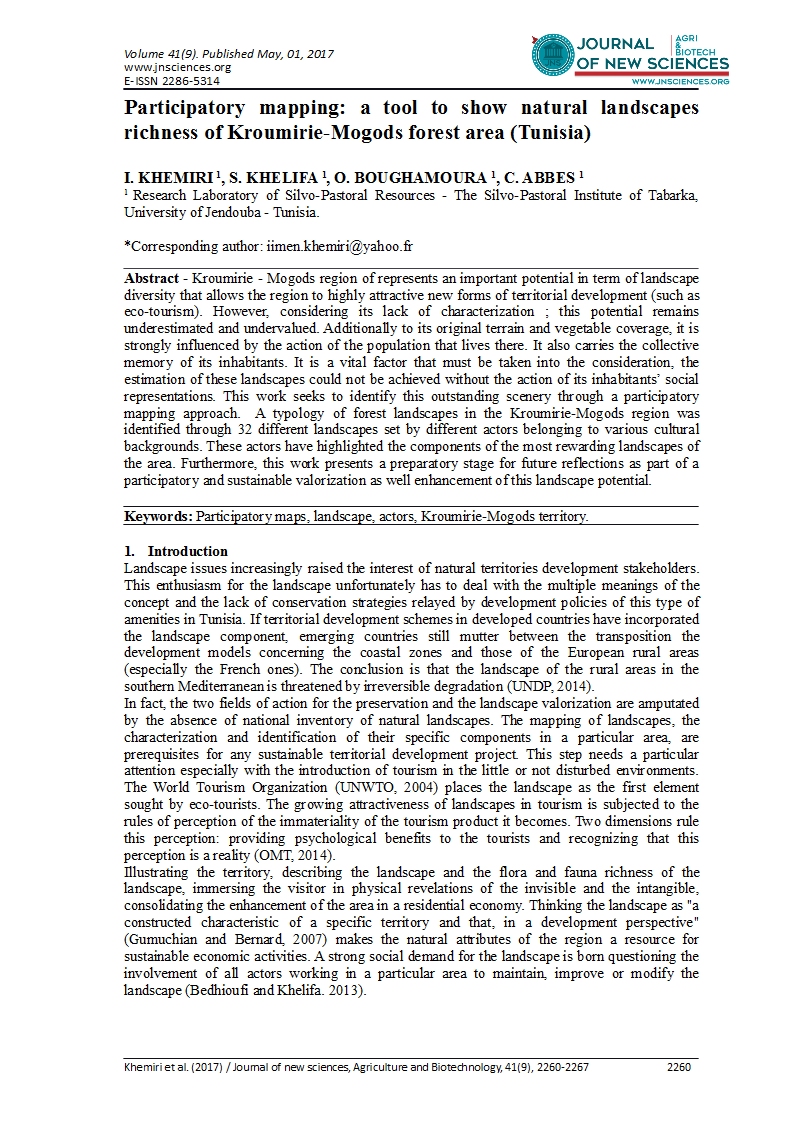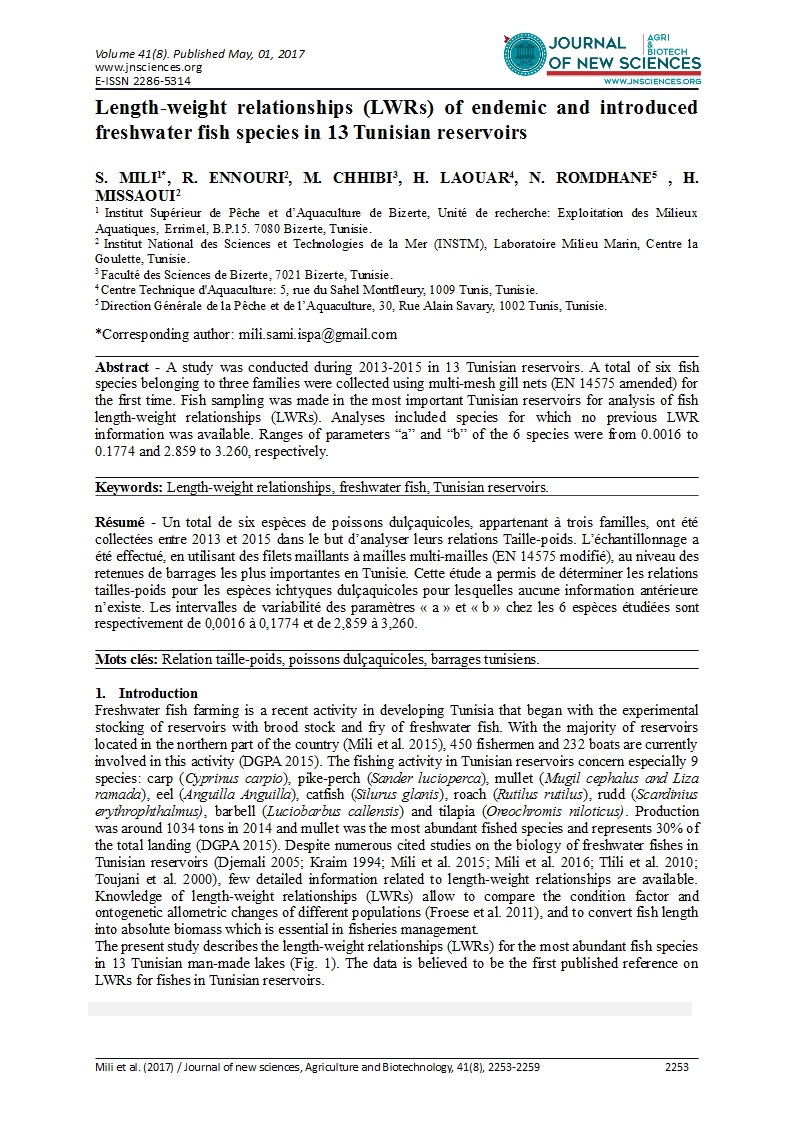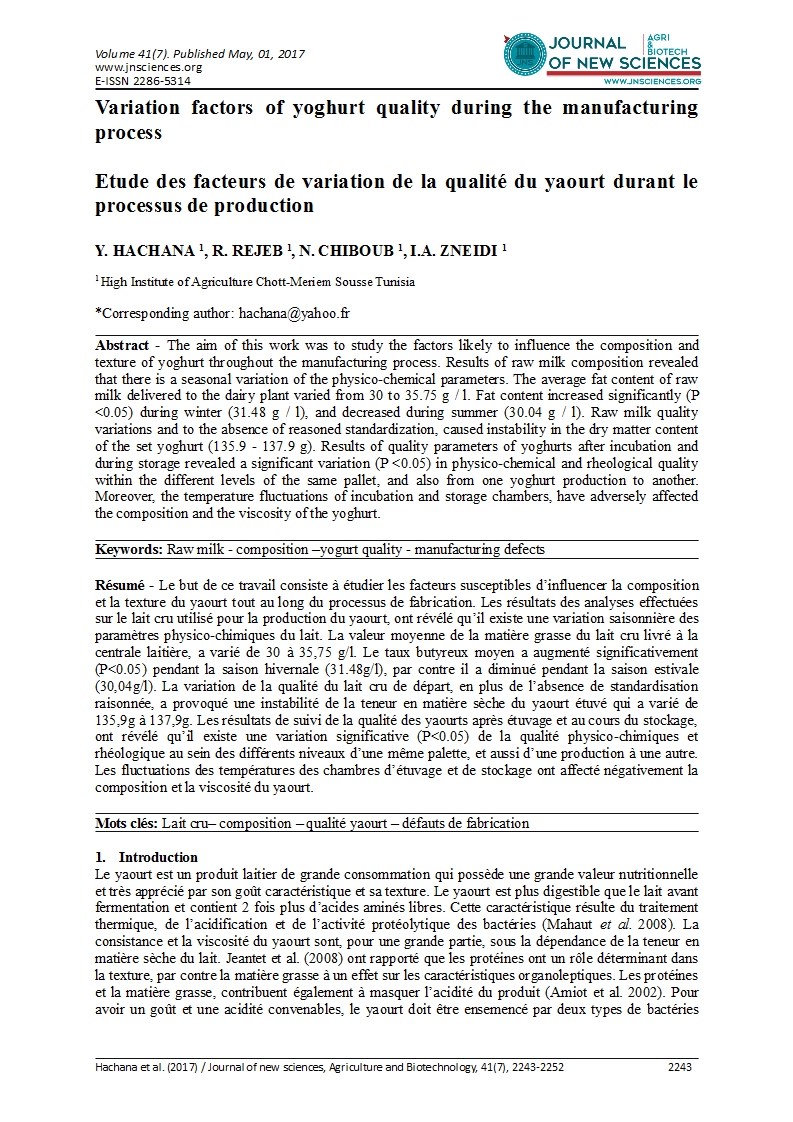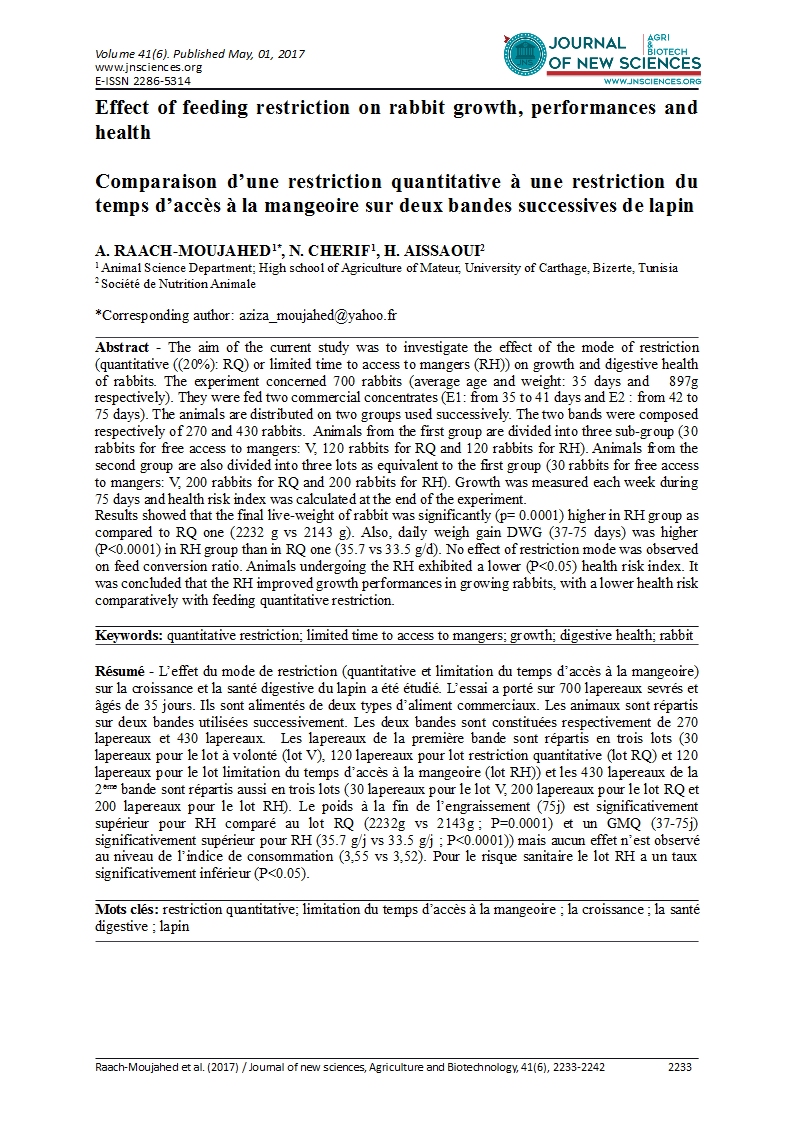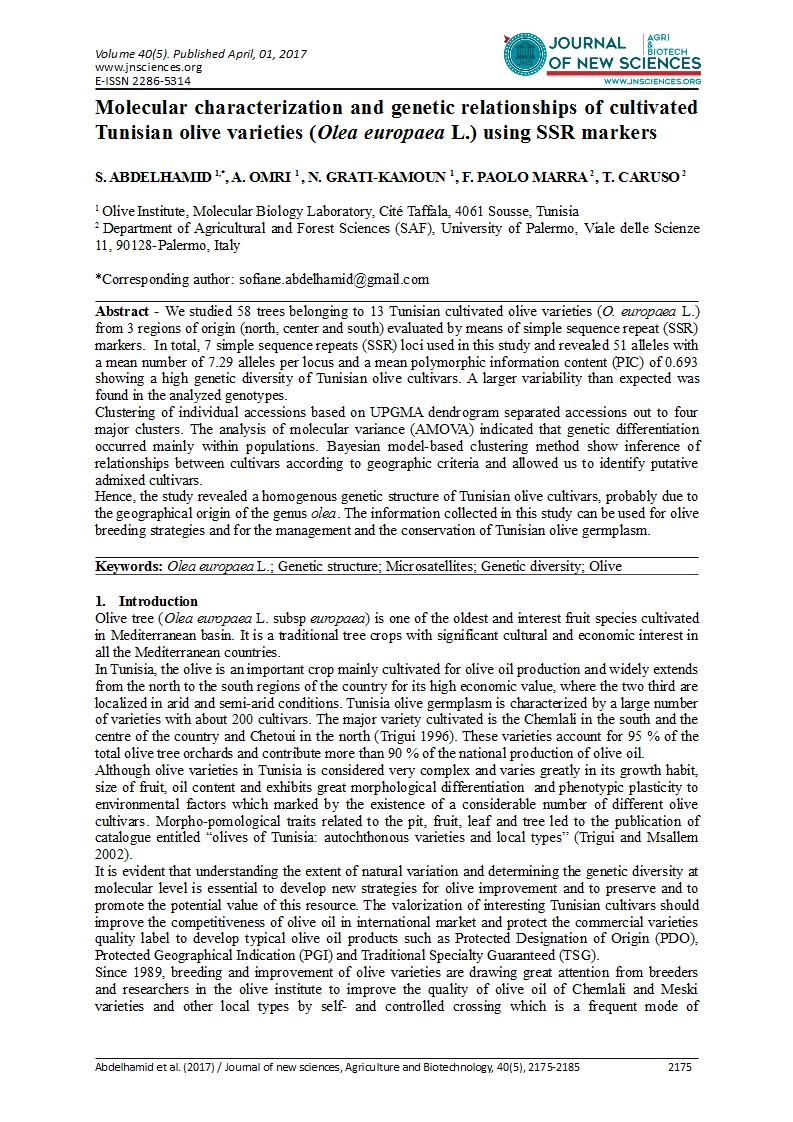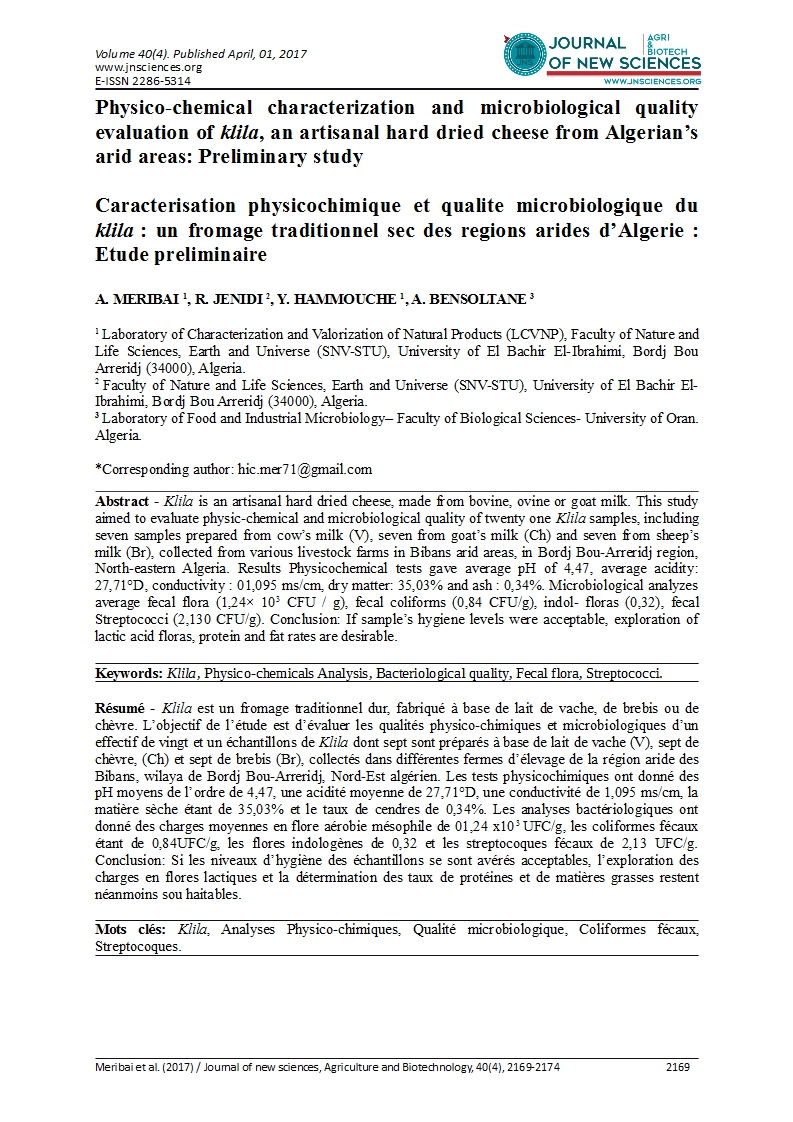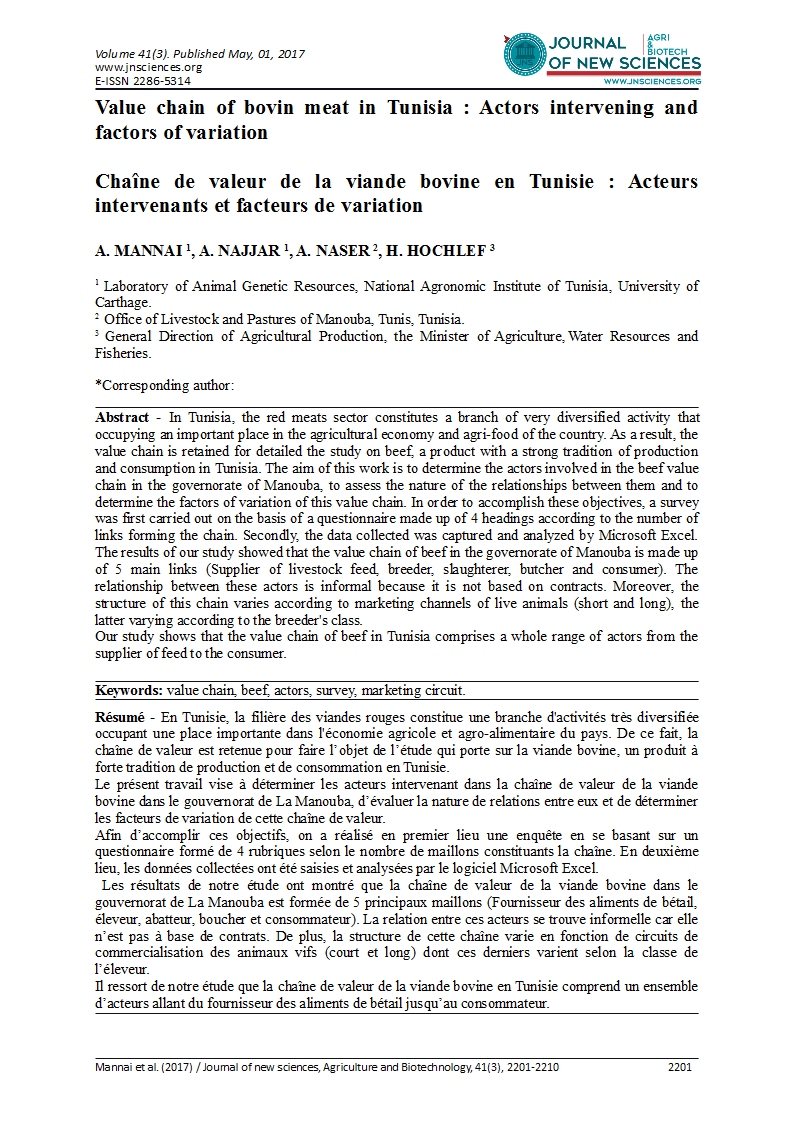Chaîne de valeur de la viande bovine en Tunisie : Acteurs intervenants et facteurs de variation
A. MANNAI 1
A. NAJJAR 1
A. NASER 2
H. HOCHLEF 3
1 Laboratory of Animal Genetic Resources, National Agronomic Institute of Tunisia, University of Carthage.
2 Office of Livestock and Pastures of Manouba, Tunis, Tunisia.
3 General Direction of Agricultural Production, the Minister of Agriculture, Water Resources and Fisheries.
Abstract - In Tunisia, the red meats sector constitutes a branch of very diversified activity that occupying an important place in the agricultural economy and agri-food of the country. As a result, the value chain is retained for detailed the study on beef, a product with a strong tradition of production and consumption in Tunisia. The aim of this work is to determine the actors involved in the beef value chain in the governorate of Manouba, to assess the nature of the relationships between them and to determine the factors of variation of this value chain. In order to accomplish these objectives, a survey was first carried out on the basis of a questionnaire made up of 4 headings according to the number of links forming the chain. Secondly, the data collected was captured and analyzed by Microsoft Excel. The results of our study showed that the value chain of beef in the governorate of Manouba is made up of 5 main links (Supplier of livestock feed, breeder, slaughterer, butcher and consumer). The relationship between these actors is informal because it is not based on contracts. Moreover, the structure of this chain varies according to marketing channels of live animals (short and long), the latter varying according to the breeder's class. Our study shows that the value chain of beef in Tunisia comprises a whole range of actors from the supplier of feed to the consumer.
Keywords: value chain, beef, actors, survey, marketing circuit.
Résumé - En Tunisie, la filière des viandes rouges constitue une branche d'activités très diversifiée occupant une place importante dans l'économie agricole et agro-alimentaire du pays. De ce fait, la chaîne de valeur est retenue pour faire l’objet de l’étude qui porte sur la viande bovine, un produit à forte tradition de production et de consommation en Tunisie. Le présent travail vise à déterminer les acteurs intervenant dans la chaîne de valeur de la viande bovine dans le gouvernorat de La Manouba, d’évaluer la nature de relations entre eux et de déterminer les facteurs de variation de cette chaîne de valeur. Afin d’accomplir ces objectifs, on a réalisé en premier lieu une enquête en se basant sur un questionnaire formé de 4 rubriques selon le nombre de maillons constituants la chaîne. En deuxième lieu, les données collectées ont été saisies et analysées par le logiciel Microsoft Excel. Les résultats de notre étude ont montré que la chaîne de valeur de la viande bovine dans le gouvernorat de La Manouba est formée de 5 principaux maillons (Fournisseur des aliments de bétail, éleveur, abatteur, boucher et consommateur). La relation entre ces acteurs se trouve informelle car elle n’est pas à base de contrats. De plus, la structure de cette chaîne varie en fonction de circuits de commercialisation des animaux vifs (court et long) dont ces derniers varient selon la classe de l’éleveur. Il ressort de notre étude que la chaîne de valeur de la viande bovine en Tunisie comprend un ensemble d’acteurs allant du fournisseur des aliments de bétail jusqu’au consommateur.
Mots clés: Chaîne de valeur, viande bovine, acteurs, enquête, circuit de commercialisation.
Read more
